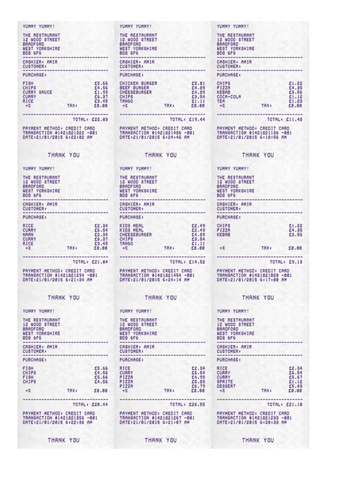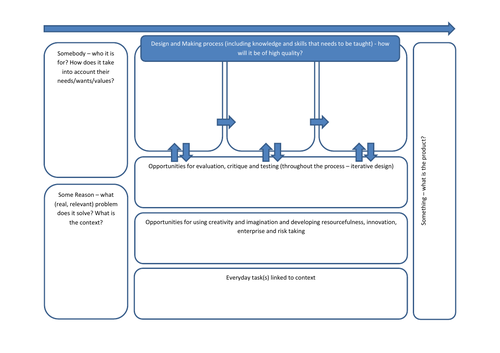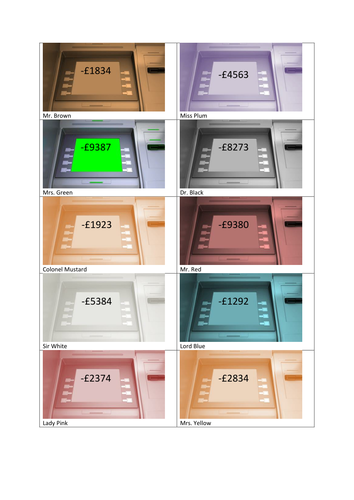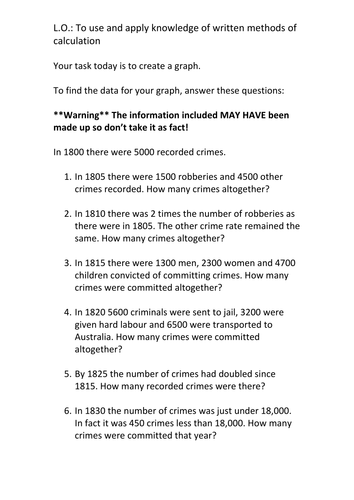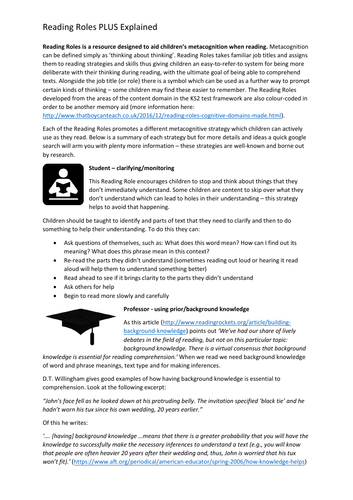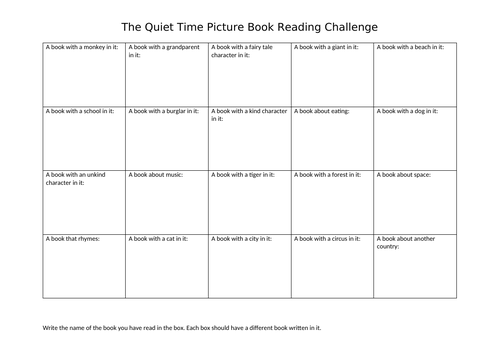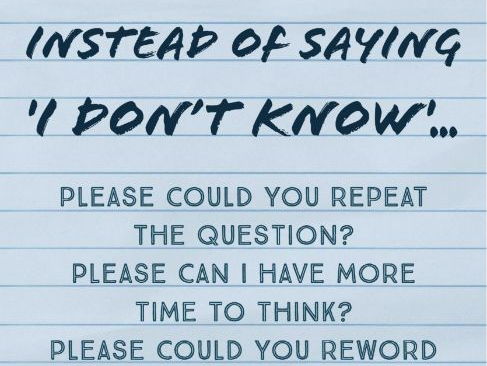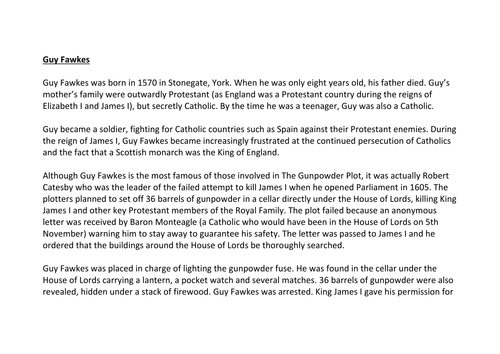
71Uploads
395k+Views
944k+Downloads
All resources

Ordering Decimals in Context of Money
Print outs of receipts for fast food restaurants - order the receipts based on the amount of money.

Planning Sheet for Primary Design and Technology Unit
This planning sheet takes into consideration the aims and purposes of the DT curriculum for KS1 and KS2. It does not focus on the individual objectives laid out but reminds teachers as they plan of the more fundamental things that the unit they are planning should address.

Crib sheet: Associative, Commutative and Distributive laws at primary level
A quick reference sheet for teachers to use outlining Associative, Commutative and Distributive laws and linking them to national curriculum statements.
Images courtesy of Richard Harvey Swanston, Primary Maths Lecturer at The University of Brighton ()
Created with reference to

Negative Numbers - Bank Balances
Finding differences between negative numbers using fictional bank balances displayed on ATM screens. Easily editable.
One resource uses 1 and 2 digit negative numbers, one resource uses 4 digit negative numbers and the third uses 6 digit negative numbers.
All resources include questions to answer using the images.

Scaffolding Inference - a technique to help children to infer meaning from texts
Condensed from http://thatboycanteach.blogspot.co.uk/2016/10/scaffolding-inference-trialling.html
This is an explanation of on easy questioning technique to build children's understanding of what they are reading, focusing particularly on inference and how inference can be supported by vocabulary knowledge and information retrieval skills.
The symbols/colours are linked to: https://www.tes.com/teaching-resource/reading-roles-a-way-to-help-children-remember-the-cognitive-domains-ks1-and-ks2-11416334

Learning Sequence (Backwards) Planning Document
A simple document to guide the thinking process behind planning a learning sequence.
One of the Word documents included in the download features comments on each part of the planning proforma which can act as a guide to use.
Included also is an exemplified version based on a year 3 reading/poetry objective.

Victorian Crime Rates Data/Calculation Activity
A cross-curricular Maths and History (Crime and Punishment since 1066) activity based on crime rates in the Victorian times. Children will interpret the data, make a graph (bar or line) to represent the data then answer questions about the data.
There are three levels with the LA task using multiples of 1000, the MA task using mutliples of 100 and requiring a range of calculations to find what the data is to put on their graphs and the HA task using 4 digit numbers and again requiring a range of calculations to find what the data is to put on their graphs.

Mo Farah’s full statement on Trump ‘Muslim ban’ - Reading Comprehension
A quick reading comprehension in response to Donald Trump's 'Muslim Ban' in the US centred around Mo Farah's initial statement outlining his concerns about not being allowed back to the US.
This reading comprehension has colour-coded questions using my 'Reading Roles' which are based on the content domain areas for reading (download them here: https://www.tes.com/teaching-resource/-11416334).

Reading Roles PLUS: Teaching Metacognitive Reading Comprehension Strategies
Reading Roles PLUS is a resource designed to aid children’s metacognition when reading. Metacognition can be defined simply as ‘thinking about thinking’. Reading Roles PLUS takes familiar job titles and assigns them to reading strategies and skills thus giving children an easy-to-refer-to system for being more deliberate with their thinking during reading, with the ultimate goal of being able to comprehend texts. Alongside the job title (or role) there is a symbol which can be used as a further way to prompt certain kinds of thinking – some children may find these easier to remember.
Read more: www.thatboycanteach.co.uk/2018/04/reading-roles-metacognitive-reading-strategies.html

Reading Roles linked to Reading Comprehension Strategies
A slimmed down version of Reading Roles PLUS which focuses only on reading comprehension strategies.

The Battle of Thermopylae Comprehension Work
Focused on vocabulary and summarising texts
Linked to my Reading Roles (see my other TES resources)
Includes 4 different activities in a sequence
Questions are based on this text from The British Museum: http://www.ancientgreece.co.uk/war/story/sto_set.html

Long Sentences to Convert into Short Sentences
Short sentences are used to build tension and describe fast action sequences. This short piece of text would be better written in short sentences and can be used in various ways to encourage children to use this technique.
Feel free to use in as creative a way as you can!

Year 4 and 5 Word Problems linked to N.C.
Word problems (mostly 2 step) linked to the National Curriculum objectives (for the four operations) for year 4 and year 5. 10 questions for each year group.
Have included some opportunities for written reasoning. There are also opportunities to promote fluency i.e. questions about ml, children could convert to l.
Please feel free to amend and use in whichever way you wish!!

Reading Comprehension Using Photo of Jewish and Muslim Protesters - Trump Muslim Ban
A comprehension activity based on a picture by Nuccio DiNuzzo taken at a US airport where protesters are protesting against Trump's Muslim ban.
The questions focus on inference and do depend on children having some background knowledge, i.e. of the Holocaust.

Mixed Number Improper Fraction Conversion Questions
A set of questions for converting mixed number fractions to improper fractions and vice versa.
Also includes a scaffolded version with area models for shading.

Picture Book Reading Challenges
2 simple grids with 20 different things per grid to find in picture books
2 more simple grids containing alphabet challenges

Poster: What To Say Instead of I Don't Know
A poster to remind children of some alternatives to saying I don't know.
Also included is a Word file of the text.

Castle Texts - poems and account of a siege (KS2)
The siege account provides two parallel accounts - one from someone inside the castle defending it, one from someone outside attacking.
One poem is by Alexander Anderson and has lots of great descriptive and figurative language to describe castles.
The other poem is by me and looks at a castle in three time periods - in a time of peace, in a time of conflict and in the modern day.

Birthday Boy Short Film Spy Report
This spy report is a fictional report based on the short film Birthday Boy which can be found on youtube.

